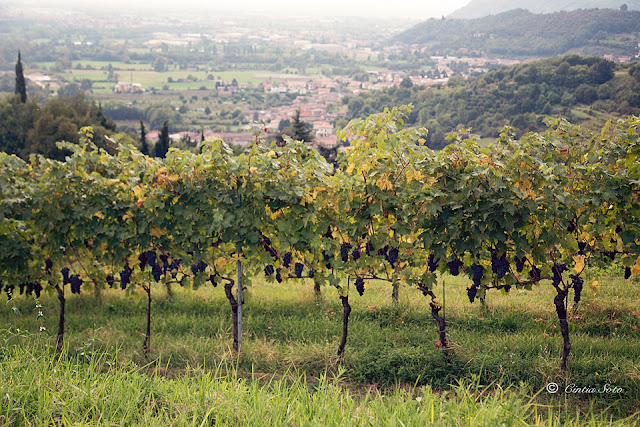Carnaval Ivrea - The Orange Battle
The Historical Carnival of Ivrea is the city’s most important festival, during which the Ivrea community celebrates its right to decide for itself, commemorating an incident that is said to date back to medieval times, when the starving townspeople were freed from the tyranny of an evil baron. According to legend, around 1200 A.D. the baron was overthrown thanks to the rebellion of a miller’s daughter, Violetta, betrothed to Toniotto, when she refused to abide by the ”jus primae noctis’ imposed by the tyrant on all young brides. She went to the castle, beheaded the baron and incited the people to revolt, leading to the destruction of the castle, which was never re-built, and the institution of a free municipality. The Orange Battle re-enacts this rebellion: the people, interpreted by the nine teams of orange-throwers on foot, fight the overlord’s army, personified by the throwers on horse-drawn carts wearing protective clothing and masks recalling ancient armour.
Orange-throwing originated around the middle of the 19th century. Before then, in the Middle Ages, the battle was waged using beans.
In fact, it is said that twice a year the lord gave a pot of beans to the poor families who, as a sign of their contempt, threw the beans onto the street. The same beans were also used at Carnival time, thrown in fun at spontaneous opponents.
In the 1800s, along with confetti, sugared almonds, lupin beans and flowers, girls also threw a few oranges from their balconies at the carnival parade. Their idea was to attract the attention of the boys they were smitten by, using this aristocratic, exotic fruit grown on the French Riviera.
From the coaches, for fun, they began to get their own back and, gradually, from being a tribute it turned into a duel. In fact, from the 1854 carnival poster we learn that General Panietti ordered that “for the success of the carnival in the last three days it is forbidden to throw oranges or other items vehemently” – but in later years this rule was not complied with, on the contrary, the throwing became a real “head to head” fight between the throwers on the balconies and those in the streets.
Only after the Second World War, with the formation of the first orange-throwing teams, did the battle take on its present-day form, following strict rules.
Nowadays over 4000 throwers on foot belonging to nine teams (Picche, Morte, Tuchini, Scacchi, Arduini, Pantere, Diavoli, Mercenari and Credendari) take part in the battle, as well as over 50 horse-drawn carts (carts and pairs with 10 throwers aboard and carts and fours with 12 throwers aboard), making a total of about 5000 people involved.
The Carnival is really a large-scale role play, in addition to being an extraordinary lesson in civic-mindedness: thousands of people that peacefully throng the squares to celebrate a festival of freedom, in a combative atmosphere like that of the Orange Battle, respecting unwritten rules, are a fine example of civility that the city can proudly boast and must “defend”.
The battle takes place according to an unwritten gentleman’s code, followed by all the participants, that guarantees their overall safety (apart from a few inevitable black eyes ) and keeps the battle on the lines of a real “sports” competition in which it is those who are the most skilful and throw the oranges hardest that win. The duel between the throwers on foot and those on the carts often turns into a private fight and, even though they are part of the crowd, the closer the relationship between the fighters, the harder the fight. Throwing as strongly as possible is a sign of respect towards an acquaintance, to honour the battle together. At the end, a handshake endorses their re-found friendship.
The battle is without doubt the most spectacular part of the carnival highlighting the fight for freedom, the symbol of the Ivrea festival. Along with all the other historical events that are part of carnival, the orange battle constitutes an incredible cultural patrimony, which makes Ivrea one of the leading carnivals on both the national and international scene. Orange-throwing is also the time with the highest collective participation. Everybody can take part by enrolling in one of the nine teams on foot or by manning the carts.
Photography: Carlo Zunino.

















Che meraviglia, un reportage bellissimo complimenti...! Un caro saluto ♥
ReplyDeleteGrazie cara, un Carnaval molto particolare degno di condividere. Un saluto anche per te.
DeleteBellissimo carnevale, ricco di storia e cultura! Mi piacciono in particolare le foto delle arance che schizzano in aria, bellissime davvero! ♥
ReplyDeleteSono d'acordo queste feste mi piacciono molto perché sempre ce tanta storia e cultura dietro. Grazie cara Vica.
DeleteWonderful post and photos, Cintia. Thank you for reading and commenting on our blog. We are happy to connect and look forward to more of your stories and photos from Italy!
ReplyDeleteThank you is very nice to have you on my blog, so many histories to share. Keep in touch.
Delete